Memorial Service for Arthur Basil Cottam and Son
On Friday the 5th of September 2014, at 10.30am a service of rededication was held by the Friends of the Wembdon Road Cemetery in memory the influence on the town of the Cottam family. This was held to mark the restoration of the Cottam memorial through the efforts of Mr. Derek Gibson M.B.E.
The Friends' Diary Entry for the event
Friends and invited guests including our President the Mayor and Mayoress of Bridgwater Steve and Stella Austen, the High Sheriff of Somerset Richard Lloyd, Mr Derek Gibson M.B.E. and members of the Architect firm Smith and Gamblin, and Rev Ed Moll of Wembdon Church gathered at the cemetery for a re-dedication service for Basil Cottam whose grave had recently been restored thanks to the generosity of Derek Gibson. Miles Kerr-Peterson (Chairman of the Friends) welcomed everyone and passed the proceedings over to the Mayor to say a few words. Derek Gibson gave an insight on the work and life of Basil Cottam and his influence on the architecture and buildings in Bridgwater. This was followed by the Mayoress laying a bouquet of flowers on the grave and the Rev Ed Moll saying a short prayer and dedication to Basil Cottam. The sun shone throughout the ceremony which finished off a lovely morning, we then made our way to the Quantock for tea and biscuits.
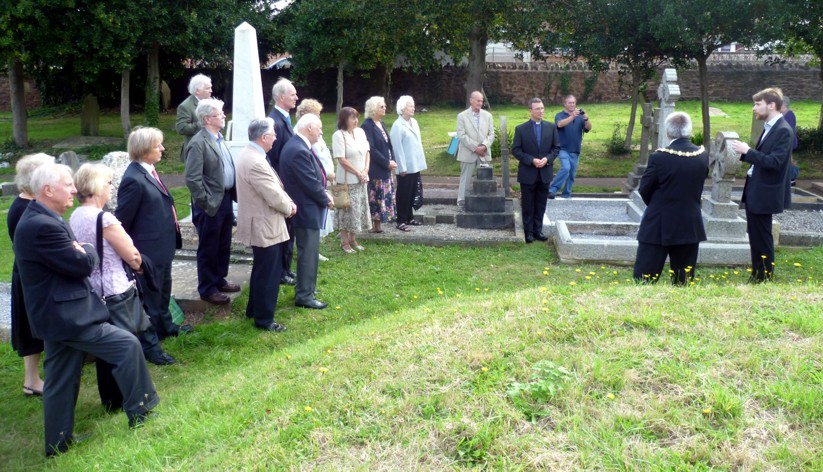
The Chairman's Introduction
Good morning ladies and gentlemen, your worships, your reverence and honoured sheriff. Thank you all very much for coming. We are here today to rededicate the memorial here of Arthur Basil Cottam and his wife Mary, repaired thanks to the very kind efforts of Derek Gibson M.B.E., and to recognise the important contribution of the Cottam family to the history and development of Bridgwater, especially this man's son, also called Arthur Basil Cottam, who, as one of the town's preeminent architects, designed so much of the built environment of Bridgwater, which we enjoy to this day.
Arthur Basil Cottam the first was a Civil Servant, astronomer and churchwarden of St. Mary's Church, Bridgwater. He was a noted and accomplished stargazer, a fellow of the Royal Astronomical Society and founding member, secretary and later vice president of the British Astronomical Society, which aimed to widen the appeal of astronomy to the general public. His 1891 book Chart of the Constellations seems to be a valued piece of research, the cheapest copy online today is £500. This man contributed greatly to the civic and spiritual life of this town, while his son contributed to the bricks and mortar of our everyday lives.
As well as the proud ornaments of or town centre, Arthur Basil Cottam the second also designed the streets so familiar to us we hardly notice them; houses in Victoria Road, Cranleigh Gardens, Taunton Road, Camden Road and so on, where countless generations have lived worked and played. Few men other than architects have such an impact on their communities in their own days but also for generations to follow.
Besides the many handsome buildings he designed which stand as testament to his memory, architect Arthur Basil Cottam, who Derek will be talking more about in a moment, has no lasting memorial in Bridgwater, as he moved away to Middlesex in 1905. He was a man who did so much to shape our town and its identity in the nineteenth century and it is fitting that we remember him today as a community. I think it also quite fitting that the memorial we see today is itself of some architectural merit, a striking yet simple cross, which thanks to Derek is again an ornament to our town, but also a fitting memorial to those at rest.
The two Arthur Basil Cottams died in the same year, 1911. I am glad to say that today, one hundred and three years later, we recognise the valuable contribution they both made to our great town. I now invite his worship the Mayor of Bridgwater Councillor Steve Austen to say a few words.
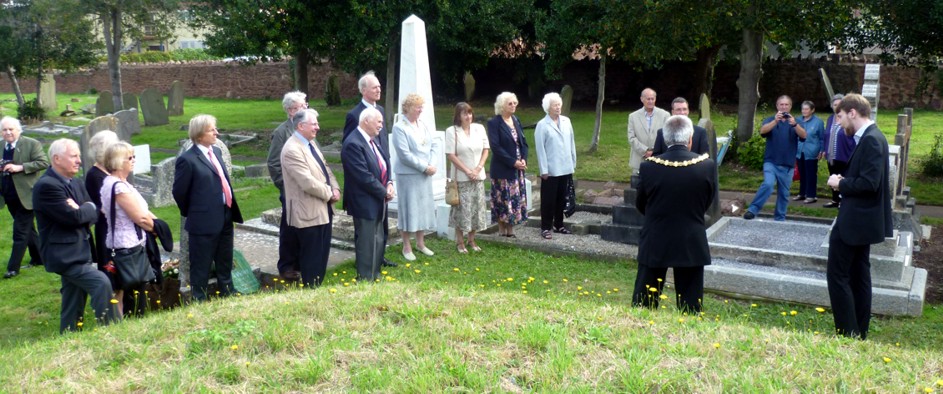
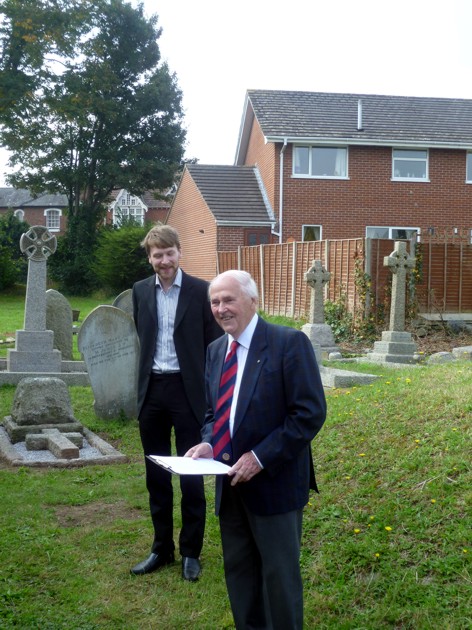
Derek Gibson's Oration
It is my privilege today to pay tribute to a man who, in his time in practice as an architect in Bridgwater, contributed so much to the built character of the town, as we now know it, in the last decades of the 1800s and the beginning of the 20th Century. However, this week's revelations have identified that such person is not the individual in respect of whose tomb we have all gathered, but such is that of his father, having also the identical name of Arthur Basil Cottam. In effect, it could be commented that we are today recognising contributions to the town of Bridgwater by the Cottam family. However, Architect Arthur Basil Cottam having been born in Putney in 1861, lived with his parents who relocated to Watford, where his father was recorded as being a Civil Servant of HM Works and Forest: for the land registry, and is now also recognised as an astronomer.. At the age of 18, young Basil was articled for 3 years as a student of architecture, later becoming an assistant to his employers. After working in Hertfordshire, in 1885 he had moved to Bridgwater, to reside at St. John's Cottage located in the grounds of Down House at Eastover, which was the home and business base of his architect predecessors, the Downs. It is noted that he arrived in Bridgwater with a Russian wife, a son, and two servants, one of whom was also a Russian. There appears to be no record as to whether his father Arthur Basil also moved to Bridgwater at the same time or thereabouts.
Digressing to set the scene of the practice in the 19th century, a Richard Down, principally an ironfounder came from Langport and took over an adjoining foundry at premises (which later became the Bridgwater Motor Company early in the 20th Century, after its disposal to Messrs Babbage & Murch.). He was recognised as an architect in times when we saw what were in effect part of the industrial revolution in the town. Edward's son Edwin Down being also involved, besides his architectural design works such as the existing Baptist Chapel and subsequently demolished Fore Street's Congregational Chapel, in designing bridges in county locations, the town's gas works and electricity undertakings. Edwin Down was responsible for laying out the St John's Cemetery in Bristol Road, and designing its chapel, along with the Dissenter's Chapel which once graced this burial ground at Wembdon Road.
Edwin Down's son Evan Robert Down only made a limited contribution to the practice, and its principal became our Basil Cottam., whom we are recognising today The Eastover premises of Down House and grounds was sold, Basil having built himself a house named "Bramblecroft" in Durleigh Road, where he was also responsible for the design of several of the Edwardian houses in that vicinity. During his time in practice, he was responsible for the design of many business and domestic premises in the town, including the Fox Fowler Bank on the Cornhill, (now Lloyds), a retail premises in Fore Street, and a temperance hotel in High Street, the latter two still existing, besides less prominent town centre buildings. Houses in Cambden Road are attributable to him, as indeed was the roadway and houses comprising Cranleigh Gardens, designed for builders Henry W. Pollard and Sons. I speculate that such latter mentioned development was named on Basil Cottam's suggestion, as he had previously resided at 2 Cranleigh Villas at Watford.
At about the turn of the 19th century, it became clear that he partnered up with Charles Samson, a Taunton architect, who together had been commissioned to construct various Victorian schools throughout the County of Somerset, and acted as Educational building architects prior to the Authority appointing its own in-house County Architect. A prominent and listed building in Taunton's Corporation Street, was designed in a classical art-nouveau style as the County School of Art.
A brass plaque in St Mary's Church records the contribution to the church by his father Arthur Basil Cottam, having been a Churchwarden prior to his death at the early age of 50 years in 1911, whereas Architect son Basil saw service as the Bath & Wells Diocesan Surveyor for several years. In general, there can be no doubt that he was responsible for adding so much to the town's built heritage which we all so greatly value. His legacy was subsequently carried on by Bunter Colthurst, a member of an enterprising Somerset family of brothers, but such is another story.
Today's story confirms that Architect Basil, having left the town, remarried and died also in 1911 in Hertfordshire where he lies buried. His first wife, Elizabeth Lucy Alice, died at the age of 39 years in this cemetery as also his a son, John Basil Stevenson Cottam who died in 1922 aged 19.
So today we recognise the life and works of Architect Arthur Basil Cottam. , with mention of his family, in paying tribute to him in this rededication of the existing memorial.
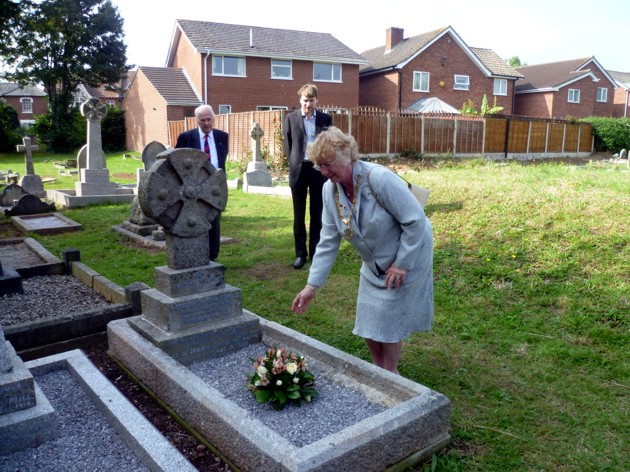
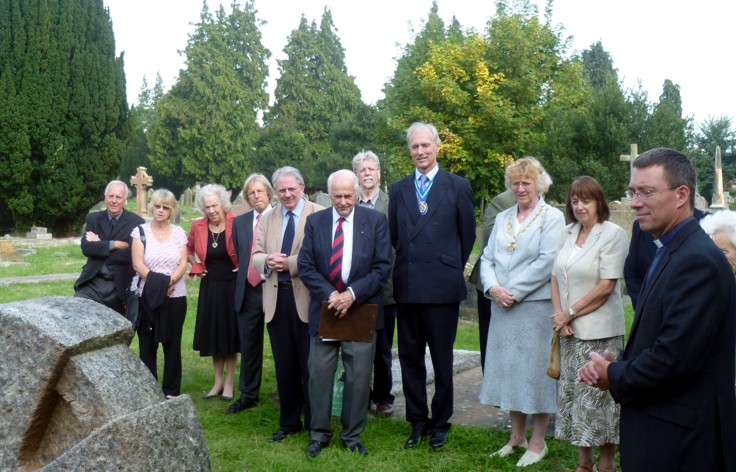
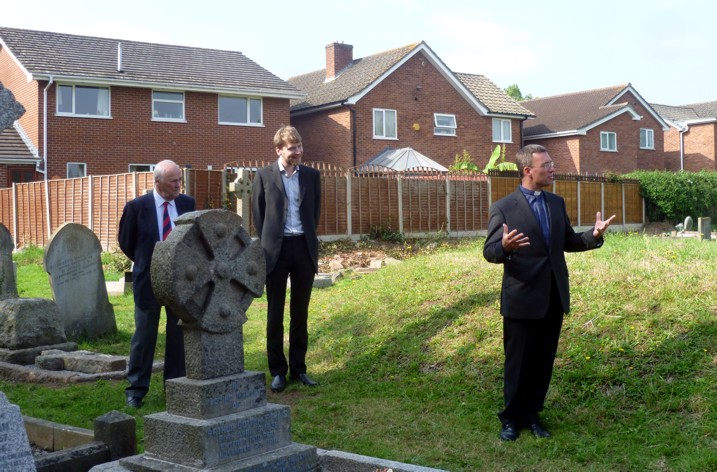
Thanksgiving
Thank you Heavenly Father for the gifts and talents that you give to each person, as we are made in your image. Thank you for the gifts you gave to the members of the Cottam family, whom we remember here:
For architect Basil Cottam, from whose work many buildings in this town remain as monuments to his endeavour
For his Father buried here, and for others, whose legacy is no less valuable even if it is seen only in the light of eternity.
Thank you for this place, Wembdon Road Cemetery, in which we are able to remember and to honour those who have died before us.
Thank you for the Friends of Wembdon Cemetery, whose labours have reclaimed this and many other memorials to restore order and dignity.
We pray for ourselves and for all who pass through this Cemetery:
that as we are reminded of others' achievements, we may be inspired to be good stewards of the gifts you have given us;
And as we are reminded of our own mortality, we may turn to the One who alone has defeated the power of the grave, Jesus Christ who was raised from the dead.
We pray these things in his name
Amen
Closing Remarks
Before we go, I should like to thank our volunteers who I think you'll all agree have done an exemplary job in transforming this area to such a degree to how it should look, a place befitting the memory and dignity of the dead and I would again like to thank Mr. Gibson for his kind work in getting this memorial repaired to its former glory
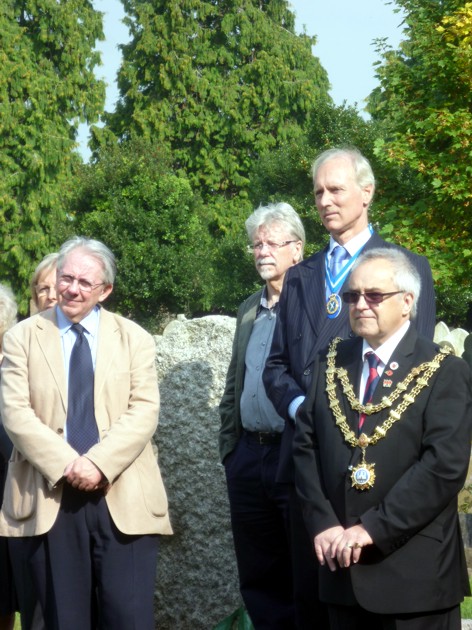
The group then retreated to the Quantock for refreshment.
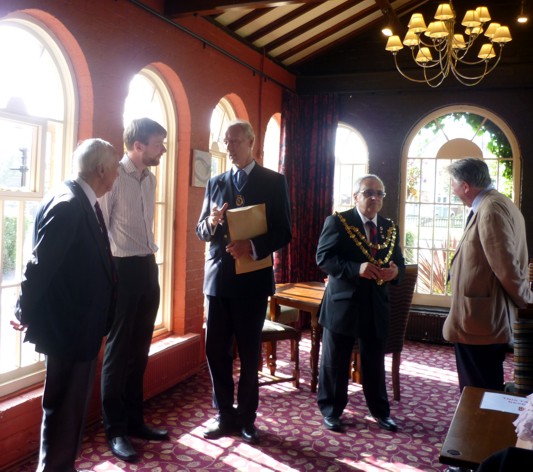
More about Arthur Cottam's remarkable life can be read about here.
